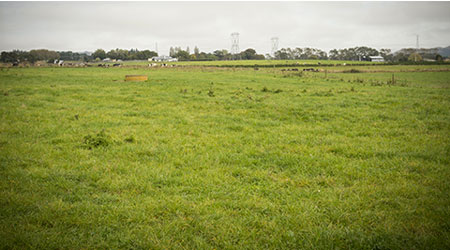Dairy Advice
Pasture Nutrition
Where protein, starch and energy meet
The emphasis in late spring and early summer is usually on controlling pasture surpluses so that pasture quality is maintained. The aim is to consistently graze to residuals of around 3.5-4 cm height (1,500–1,600 kg DM/ha); this means ryegrass plants will have 2–3 leaves for pre-grazing cover.1 Grazing to lower levels than this knocks pasture growth as plants do not have adequate leaf area to intercept sunlight efficiently, and sunlight, along with moisture, are key drivers of plant growth. It also prevents plants from producing tillers and laying down stores of carbohydrates in the roots, these are needed for plants to survive the summer ahead. Letting residuals rise above this is not a good idea either, as dead matter will start to build up, tillering will drop and plants will become stemmy, all of which will decrease pasture quality.
If sufficient stock are not available to keep a lid on pasture levels then deferred grazing is an option. This can result in a loss of pasture quality, so conservation is the best policy to maintain good-quality pasture. Conserved pasture, i.e. silage or baleage, is the next best feed to pasture, in terms of economics (recently estimated by DairyNZ at 1.77c/MJ ME eaten), and allows the transfer of high quality feed with good protein levels to later in the season. With a dry summer looming, this feed source may be particularly valuable this year.
Of course, the value of silage will be affected by the quality of the product to start with; timing is of the essence when cutting silage. It also needs to be managed correctly after cutting to ensure its quality is maintained; poor management can result in fermentation losses during storage or high wastage when it is fed out.
The mineral make-up of pasture is also worth monitoring as deficiencies, excesses, and the interactions between minerals can all affect animal health and production. The mineral levels in pasture can vary from season to season, on different soil types, in different regions, and from farm to farm. Herbage samples are generally taken in spring, when pasture is actively growing. Once the test results are back, a suitable supplementation programme can be developed if any imbalances have been revealed.
Later in the season
As the season progresses and ryegrass plants become reproductive the energy content and growth rate of pasture will drop and fibre and dry matter levels will rise. ADF (acid detergent fibre) and NDF (neutral detergent fibre) are measures of the fibre content of pasture. At high fibre levels rumen microbes can struggle to break down the strong lignin, cellulose and hemi-cellulose elements that up the fibre in pasture. This can have a negative impact on an animal’s ability to process pasture nutrients, with a flow-on effect to milk production.
Maintaining good-quality, leafy pasture will help to minimise this effect.
| Component | Green leaf | Soft stem | Hard mature stem | Dead material |
| Digestibility | 70-85% | 65-75% | 40-50% | 40-50% |
| Energy MJ ME/kg DM | 10.5-12.5 | 10-11 | 6.5 | 6.5 |
Table 1. Technical Series, August 2014
The protein levels in pasture will also drop in summer. Protein is measured as crude protein (CP) and in research carried out at Massey University CP was measured at less than 15% in summer pasture. Again, good pasture management helps to keep protein levels up complement this by using the high-quality silage made earlier in the season or a supplement with high protein levels, like protein pellets, cottonseed meal or soya bean meal.
If conditions become dry the goal of keeping residuals above 3.5 cm can be difficult to maintain. Some of the water-soluble carbohydrates in pasture are stored in the first 4-5 cm of plant material above the ground and these reserves can literally be eaten into, resulting in slower pasture recovery after autumn rain. This is another situation where good-quality supplements can be used to help rebuild pasture residuals to target levels.
In any season the ultimate goal is to manage pasture to maintain its quality. Making silage, as part of the strategy, supports this aim, and ensures supplies of a good-quality, low-cost supplement are on hand when pasture supply becomes limited in summer.
References:
1 Lee, J, Hedley, P & Roche, J (2011), Grazing management guidelines for optimal pasture growth and quality, DairyNZ Technical Series, Issue 5, September


